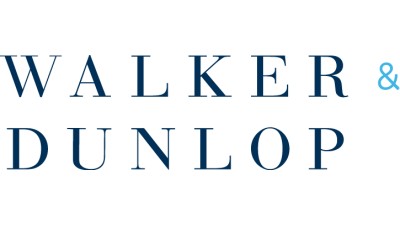Single-Family Sales Soar, Powering Homebuilding Rebound

Usually, it’s when Americans feel secure in their finances that they start spending more on homes. But after taking a critical hit in the early days of the coronavirus pandemic, the homebuilding market has come roaring back.
Even with tens of millions of Americans out of work, single-family home sales jumped by 25% between June and July, and 68% of the single-family homes sold in July spent less than a month on the market, according to housing research firm Zelman & Associates.
On Wednesday’s Walker Webcast, Zelman & Associates CEO Ivy Zelman contended that even as Americans are cutting back their spending on things like entertainment and travel, they are increasing their investment into their homes, either by leaving their apartments, moving to larger single-family homes or improving their existing homes.
“A larger share of their wallet is going toward their homes now,” Zelman told Walker & Dunlop CEO Willy Walker. “People are looking at the spaces they have and realizing they’re not big enough or good enough, or they don’t have outdoor space. Your home is your castle now.”
Public and private homebuilders that had been struggling in March and early April now have immense backlogs of orders for homes, Zelman said. Demand for new homes is likely to go unmet for many years, since many first-time homebuyers are looking for cheaper, entry-level homes, which many homebuilders had been wary of building since the financial crisis in 2008 and 2009, which was powered by risky lending by banks and a housing bust.
All the demand for new housing has driven the median price of a home up 4.5% in the last year, according to Zelman’s firm. On the webcast, Walker posed the question of whether home price inflation might place first-time homeownership out of reach for lower-income households, leading to a more unsustainable recovery for the homebuilding market. Zelman responded that affordability challenges would likely only become a problem if interest rates begin to rise again, which she does not foresee happening in the next two years, as long as unemployment remains such a pressing issue.
Walker also questioned how healthy the single-family market was, given that between 7% and 8% of government-backed mortgages for single-family homes are currently in forbearance, a rate that is holding at about 1.9% for multifamily assets. Zelman countered that higher forbearance numbers are natural for single-family homes, since multifamily assets spread risk across many tenants. And with single-family inventories so tight at the moment, single-family homeowners could likely sell their stakes in their current homes and still have funds left over after repaying the bank.
“While it’s a tragedy for the millions of Americans out of work, the more than 160 million Americans who are still gainfully employed are the ones doing the buying,” Zelman said. “We’re seeing that interest rates trump COVID, as people keep on investing in homes.”
Zelman also predicted that the multifamily industry had more punishing times ahead. Even as owners in dense urban areas give away record concessions to lure in new tenants, new multifamily developments will continue to hit the market for the next few years, increasing competition for the renters who have not fled the city.
Presented with the question of where she would invest if she had a million dollars to put into the housing market, Zelman said she was most interested in single-family rentals, both in her home market of Cleveland — where low competition led to high unlevered yields over long investments — and in emerging markets like Boise, Idaho, and Birmingham, Alabama.
“There’s a great shuffle happening as people move to more affordable places with more hospitable climates than the cold Northeast,” Zelman said. “People are finally coming around to these markets that have gone overlooked.”
Next Wednesday, Willy will host Eric Yuan, CEO of Zoom. Register here for the event.
This feature was produced in collaboration between the Bisnow Branded Content Studio and Walker & Dunlop. Bisnow news staff was not involved in the production of this content.

